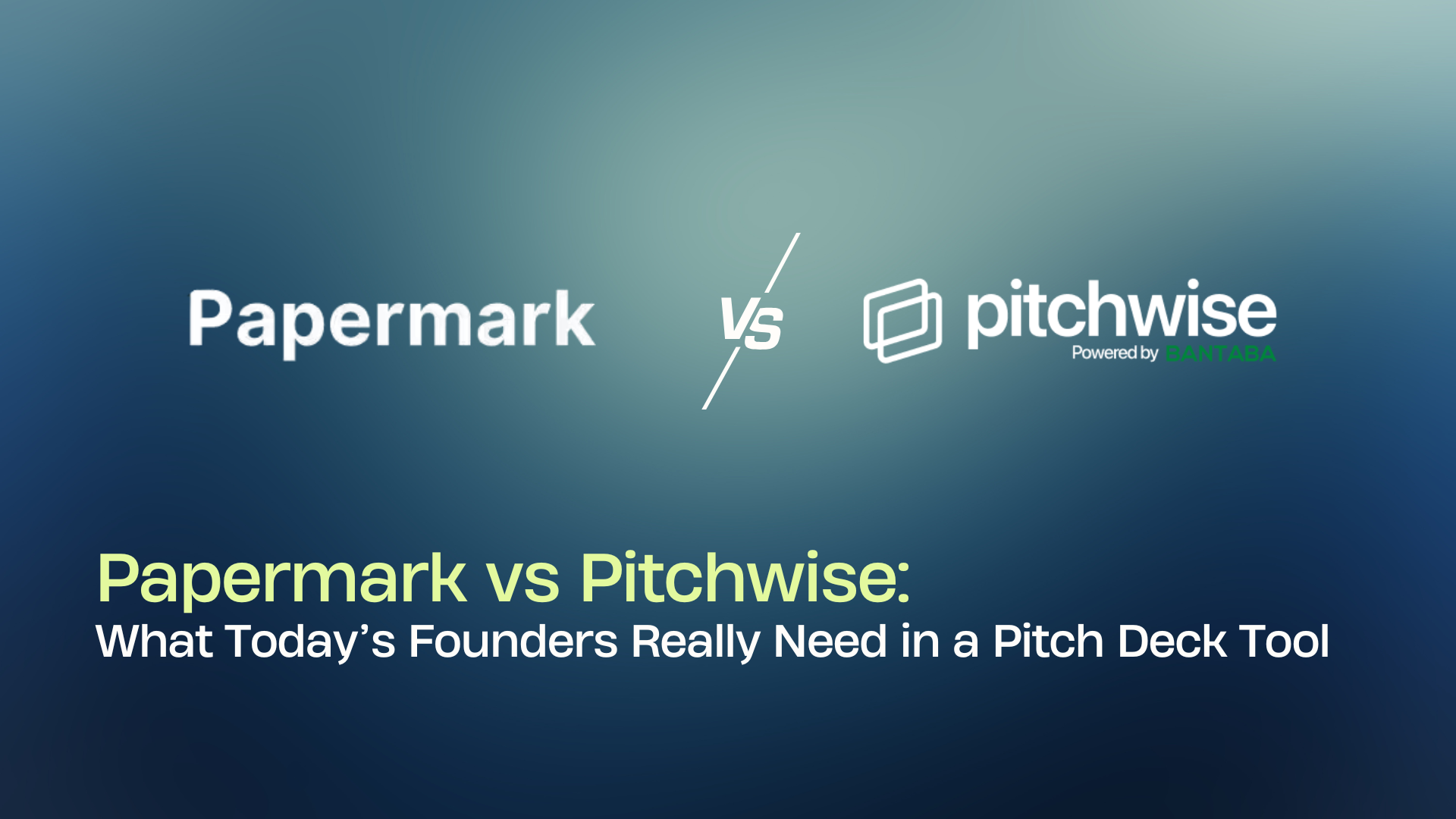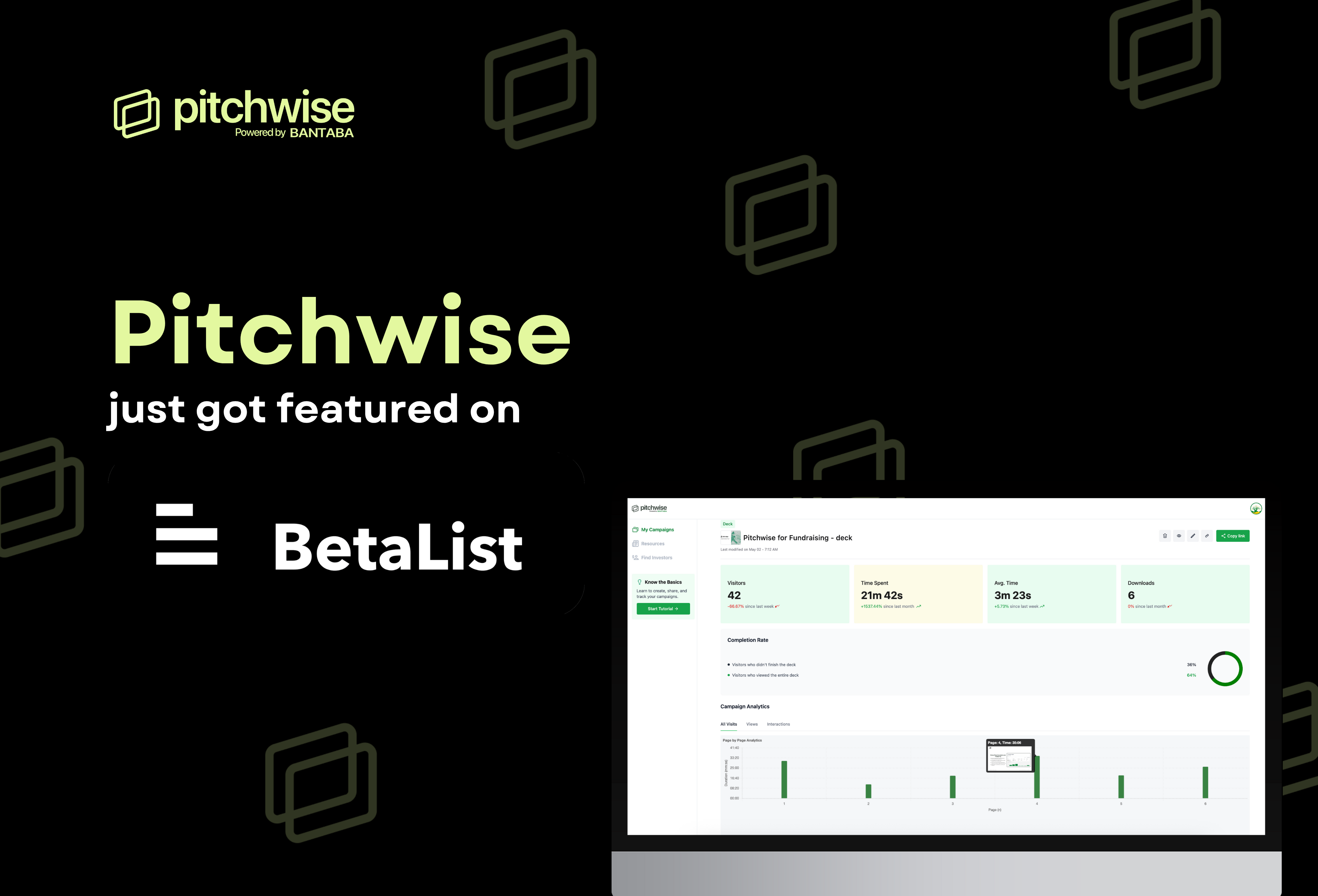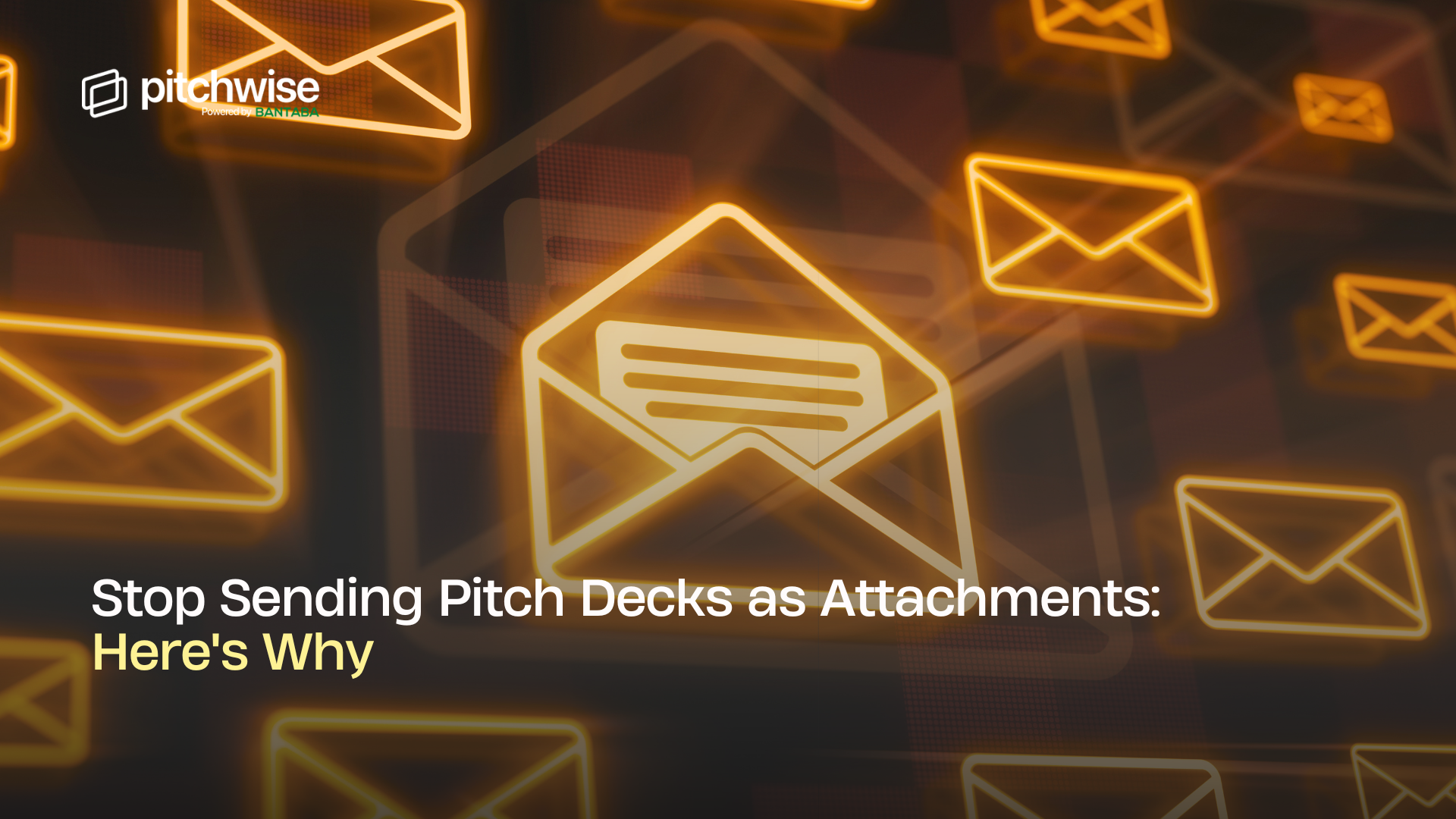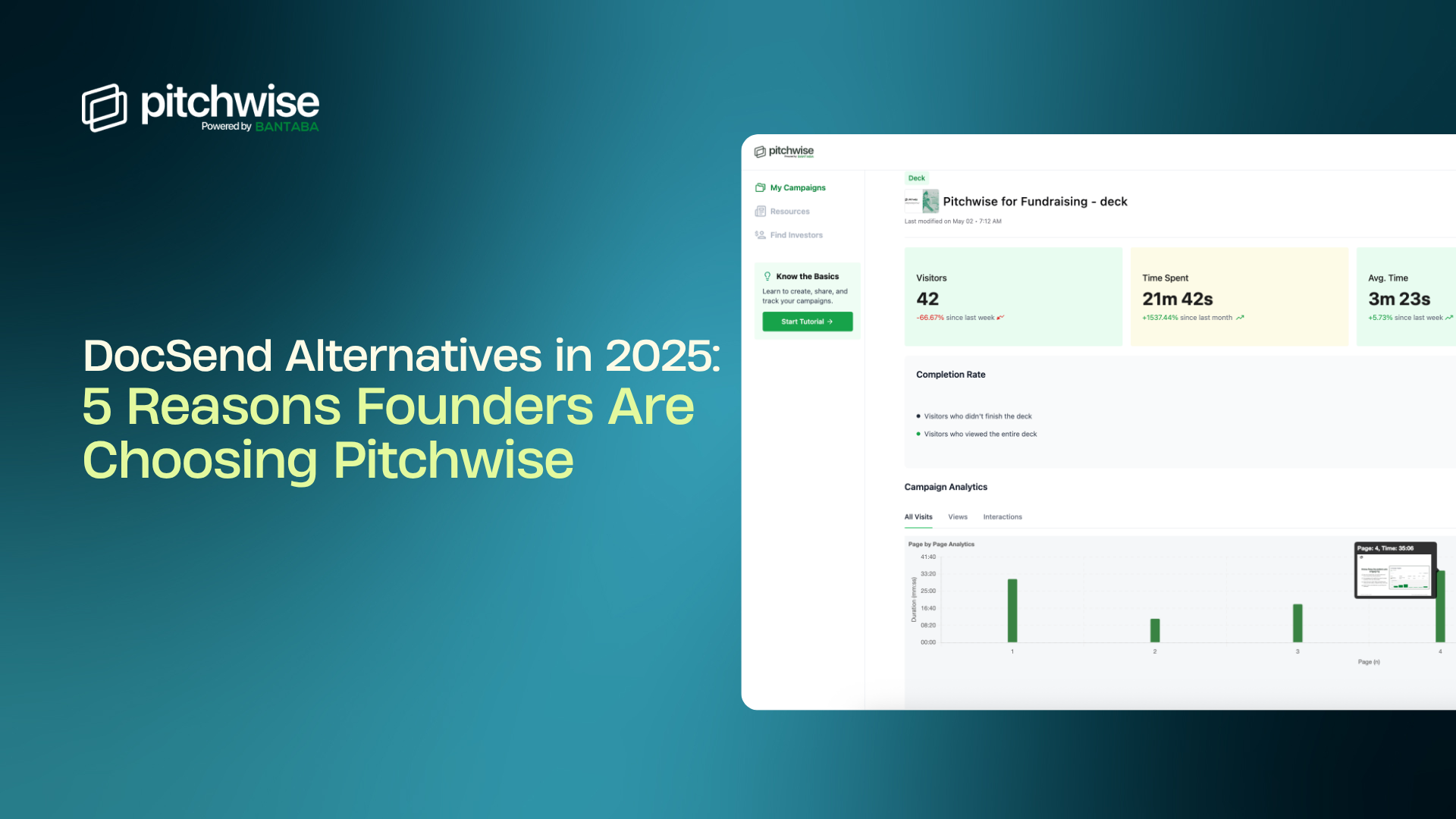In the world of fundraising, first impressions aren't just important; they're everything. Most investors decide whether to keep reading your deck within the first minute. And in that short window, the smallest missteps can lead to a swift "pass".
After tracking hundreds of pitch decks on Pitchwise, we’ve seen exactly where founders lose investor attention. This article unpacks the most common mistakes that cause drop-offs and how you can avoid them to keep investors engaged from slide one.
1. Weak Opening Slide
Your opening slide is the cover of your story. If it’s vague, overloaded with text, or missing essential info (like your startup name, tagline, and logo), investors won’t be intrigued to continue.
Fix it: Make your opening slide clean, branded, and impactful. Include your company name, one-line value proposition, and a visual cue for what you do. Set the tone.
2. No Clear Problem Statement
If an investor can’t immediately understand what problem you’re solving and why it matters, they’ll move on. Generic problem statements like "people struggle with time" or "everyone wants to save money" don’t work.
Fix it: Be specific. Frame the problem with real-world context and pain. If possible, back it up with a stat or example that creates urgency.
3. Too Much Text on Early Slides
You don’t want investors reading paragraphs. Walls of text overwhelm the eye and slow down the story.
Fix it: Each slide should focus on one idea. Use headers, bullets, and visuals. Think “pitch deck”, not investor memo.
4. No Visual Flow
Decks with inconsistent fonts, cluttered layouts, or mismatched visuals break focus. Investors subconsciously associate poor design with poor execution.
Fix it: Use a clean, consistent design system. Stick to 1-2 fonts, a unified colour palette, and well-aligned slides. Tools like Canva or Pitch can help, or use our Editable Pitchwise templates.
5. Burying the Hook
Founders often wait too long to show traction or insight. If your deck takes 7+ slides to get to the good stuff, you’ve likely lost the reader.
Fix it: Move your most compelling signal (traction, market insight, founding story) to slides 2 or 3. Grab attention early.
6. Vague Market Sizing
Claiming a "$100B opportunity" without context is a turnoff. Investors want to know how you fit into the market, not just the size of the pie.
Fix it: Use a bottom-up approach. Show how your addressable market is defined by user segments, pricing, and realistic adoption.
7. Overcomplicated Product Slides
Founders often try to explain too much too soon. Listing every feature, architecture diagram, and UI screen can overwhelm.
Fix it: Focus on what the product does, not how it works. Highlight the outcome and user benefit. Save the deep tech for follow-up conversations.
8. No Ask or Use of Funds Slide
Ending a deck without telling investors what you’re raising, how much, and what for is a missed opportunity.
Fix it: Be clear about your ask. Include how much you're raising, your use of funds breakdown, and key milestones that funding will unlock.
9. Not Using Data to Refine
Many founders keep using the same deck without knowing how investors react to it.
After tracking hundreds of pitch decks on Pitchwise, we’ve seen exactly where founders lose investor attention. This article unpacks the most common mistakes that cause drop-offs and how you can avoid them to keep investors engaged from slide one. Use tools like Pitchwise to track which slides investors spend time on, skip, or revisit. Use that data to improve your flow and follow up with relevant insights.
Final Thoughts
Most investor decks are ignored not because the idea is bad but because the story isn’t clear, compelling, or visually engaging. You don’t need a flashy design team to make a great deck; you just need clarity, confidence, and a few strong fundamentals. You can also download one of Pitchwise's Editable Pitchdeck templates for your industry here.
If you’re not sure where investors are dropping off, Pitchwise can help. Upload your deck, get real-time insights, and use data to turn passive views into real conversations.
Start a free trial now at pitchwise.se

















.png)









.png)

%20.png)







.png)














.png)

.png)



.png)
.png)


.png)
.png)



















